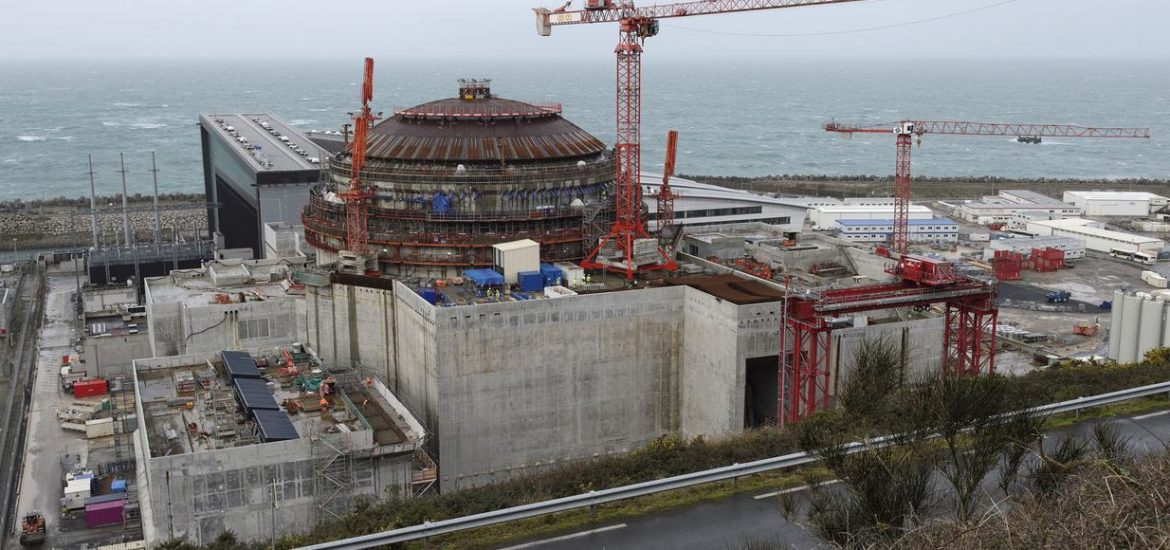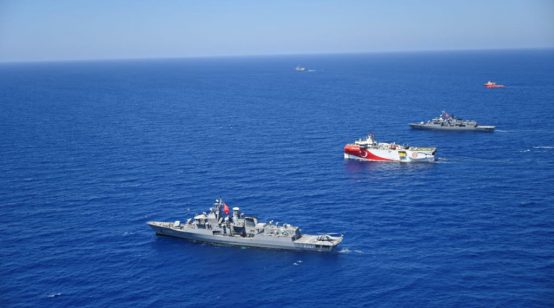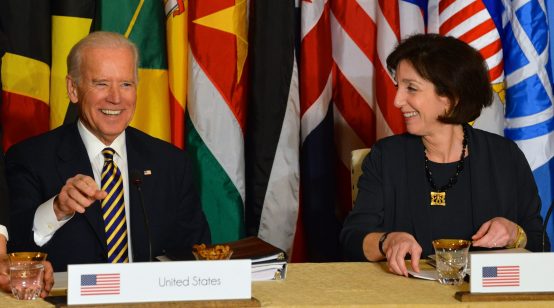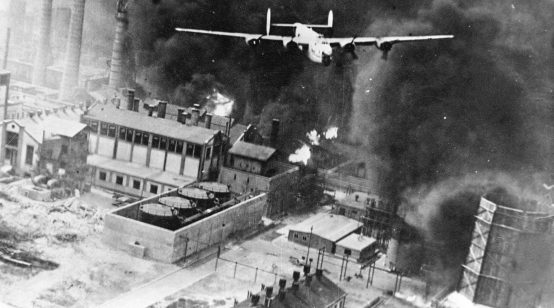
Nuclear power has long been a controversial energy source, but it accounted for roughly 11% of the world’s electricity production in 2016, including 75% in France. Its share in the power mix, moreover, has changed little over time. In 2015, a worldwide fleet of 437 reactors generated 413 GW of power.
The IEA’s Energy Technology Perspectives 2017 has highlighted several interesting developments that will shape nuclear power’s future. For the first time since 1990, nuclear energy saw its prospects improve in 2016, as new reactors combined to add 10 GW to electricity networks. This compares with an IEA-calculated annual average over the last ten years of 8.5 GW of new generation capacity. In the IEA’s 2°C Scenario, which gives a 50% chance to limit the average global temperature increase to 2°C, nuclear has an annual target of 20 GW of new generation capacity.
Nuclear Power: Still Feasible, and Evolving
But what is a realistic scenario for nuclear energy? According to the IEA, nuclear’s share in the world’s electricity mix would increase to 15% in 2060 in the context of world electricity production growth. It notes, however, that by the end of 2016, only 10 out of 163 states refer to nuclear power in the energy strategies to reduce greenhouse gas emissions that they submitted to UN following the Paris Accord in November 2015.
Asian countries have the most ambitious targets for increasing nuclear power. China plans to double its nuclear capacity by 2020 to 58 GW and with 30 GW under construction by 2020, South Korea aims to increase its capacity from 23 GW in 2016 to 38 GW in 2029. While India is producing 60% of its electricity with coal, it plans to increase nuclear from 5 GW in 2015 to 25% of its overall generation by 2050. Japan, on the other hand, is struggling to restart its historical use of nuclear power after the Fukushima disaster in 2011.
Nuclear power in Europe and the United States, on the other hand, has been postponed due to competition from US shale gas. Europe is mixed. Germany and Switzerland both exited nuclear power, but Sweden, Finland, some eastern European countries and Russia have continued to invest in it. The UK is renewing investments in the sector, partly through foreign capital, with the two EPR (Evolutionary Power Reactor) reactors to be built by EDF at Hinkley Point C. being examples. France is seeking to limit its nuclear capacity to 63 GW, while reducing the share of nuclear power in its electricity production to 50% in 2025.
While there are enough reserves of uranium to fuel nuclear power until the end of the century, the question of future reactors is uncertain. According to the IEA, the majority of reactors under construction belong to the third generation: EPRs and its variants, more generally known as APRs (Advanced Power Reactors), which have enhanced safety systems, better efficiency, and lifespans of 60 years. After delays in construction and significant cost overruns, most notably in Finland and France at Flamanville, the first APRs recently became operational: the APR 1400-MW reactor in South Korea in 2016, the 1,200-MW reactor at the power plant Novovoronezh in February 2017, the 1700-MW Finnish plant in Olkiluoto began tests in 2017, the 1,700-MW Taishan 1 reactor in China in 2016, two of which were built by Areva.
A scenario with third generation reactors that have lower generation capacity (less than 1,000 MW) is also conceivable. US manufacturer NuScale Power intends to test small, second-generation reactors and submitted a request for certification of a 50 MW plant to the US nuclear regulator in January 2017. It wants to build a 600-MW power plant consisting of a dozen mini-reactors, the tank of each unit being immersed in a concrete pool dug in the ground and the core being cooled by water-circulation convection.
Nuclear Alternatives?
Another question is whether there are alternatives to current reactors that would be safer and more cost-competitive? Fourth-generation reactors are the subject of international consultation within the framework of the OECD. Fission is triggered by bombarding the fuel, a mixture of uranium and plutonium, with high-energy neutrons. The reactor produces new plutonium charges in situ, so it is a “breeder.” (C. Behar, “Nuclear Systems of the Future,” Pour La Science, No. 456, p. 60, October 2015,). The main advantage of such a reactor is its use of plutonium, which, produced with uranium, would extend fuel reserves for several hundred years. France is building the new 600-MW Astrid prototype reactor that will use liquid sodium as a heat transfer fluid (an option with helium is also possible). Japan, meanwhile, has decided, in January 2017, to close its experimental Monju breeder reactor using sodium.
This generation will only be credible if its security is assured, but this is unclear. “Molten salt” reactors are an alternative to current uranium reactors. A prototype was tested in Oak Ridge, USA in the 1960s—designed for an atomic engine for aircraft! In these reactors the fuel, thorium or uranium, is dissolved in a molten salt (lithium or beryllium fluorides). This liquid then serves both as a support for fission and heat evacuation. In addition to its improved safety, these reactors would use thorium, the reserves of which are three times those of uranium, and producing considerably less long-live radioactive wastes. Furthermore, its fuel would be difficult to be used for producing an atomic weapon. India, well endowed with thorium, is experimenting with a 30-MW reactor, as is China.
In the United States, the ThorCon consortium designed a modular reactor operating with liquid thorium fluoride mixed in a liquid coolant (other fluorides) and with graphite as a moderator. Each 250-MW module is housed in an underground concrete cavity. If the safety and economic competitiveness of low-power reactors are assured, a scenario could be envisaged in which a country would be equipped with 100- to 300-MW reactors which would more cheaply to fortify the production of intermittent wind and solar electricity, entering a “new nuclear era.”
Obstacles Remain
Nuclear power must lastly resolve two important issues: the possible extension of the activity of “older” reactors and the storage of nuclear wastes. The first issues arises from reactors over forty years old in France (this is the case of the Fessenheim plant whose closure has been decided), the United States, Japan and other countries. Extending the operation of a power station is given by an official Nuclear Safety Authority. In a series of studies on the safety of French reactors, researchers at the Ecole des Mines de Paris (R. Bizet, P. Bonev, and F. Lévêque, Mines ParisTech, “Are older reactors less safe? Evidence from incidents reports in the French fleet,” CERNA, February 2017) have shown that there is no “age fatality” for nuclear reactors. With 19,000 incidents in the French database, they show that the reactor technology is the critical parameter (the incident frequency is not the same for the 900-MW and 1450-MW reactors). Furthermore, it is possible that their safety improves during their lifetime. In other words, priority must be given to the specificities of a reactor’s technology and its weaknesses in the decision-making process about extending operation (if no failures have been detected) and improving safety, so long as their cost is not prohibitive.
The problem of storing radioactive nuclear wastes, particularly from spent fuel, remains unanswered. An incident at the Hanford site in Washington, DC in May 2016 illustrates the urgency of the problem. This out-of-service, plutonium-producing military site had been transformed into a solid and liquid wastes storage complex, but the ceiling of one underground gallery where wastes were stored in wagons collapsed. The accident did not release radioactive emissions. Nevertheless, scientists, notably those of the Bulletin of Atomic Scientists, have denounced the U.S. Administration’s failure to allow the situation to deteriorate in Hanford and its inability to find a national solution for waste disposal. The project for the construction of an underground storage site in Yucca Mountain in Nevada, 100 km from Las Vegas, was abandoned by the Obama Administration and resuscitated by the Trump administration.
France’s Nuclear Future
France, for her part, is tackling the problem within the framework of the Bataille law, voted by Parliament in 1991. This law retains the principle of a “reversible” storage of high-level and medium-level and long-lived radioactive wastes into a site dug in a geological layer. ANDRA (National Agency for the Management of Radioactive Waste) is responsible for preparing and managing this storage, with temporary storage already carried out on surface, and it is the purpose of the so called Cigéo project (Industrial Center for geological storage). A site has been chosen at Bure on the edge of the Haute Marne and the Meuse to build an underground laboratory 500 meters deep into a layer of clay with, presently, 1600 meters of galleries already dug (with the thanks of the author to the Andra for a visit of the site). The storage conditions are tested in situ. As it has to be ensured for several hundreds of thousand years, it is necessary to check the geological stability of the layers and material of the containers, this is the case with this type of clay dating from 160 million years. The robotization of the handling of the containers is also tested.
The future storage area would cover 45 square kilometers and be commissioned by 2030 with an estimated total cost of 25 billion euros that EDF will have to provision for waste coming from its current reactors. Its impact on the cost of kWh would be about 1% to 2% according to the Court of Auditors. The project was the subject of a local consultation but arouses criticism like all the major current infrastructure projects. Yet whatever one thinks about nuclear future, nuclear waste storage is unavoidable if we want to avoid situations like the one in Hanford and not simply leave these problems for future generations. A recent report by the American Academy of Arts and Sciences in New York (RD Sloan, “Multinational Storage of Nuclear Fuel and Other High-Level Nuclear Waste, a road for moving forward,” New York 2017) puts forward the necessity of addressing this problem and advocates for multinational solutions.
Sixty years after the first nuclear power reactors came into service in the Soviet Union and Great Britain, the nuclear industry poses many questions. The choice of an energy system is a political decision, the Swiss referendum being an example, having to take account of three criteria: the possible, the desirable and the acceptable (see B.David et al. “Prospectives énergétiques: le possible, le souhaitable et l’acceptable,” Futuribles, No. 390, p.5, November 2014). With regard to underground waste storage, which is regulated by law in France, it can be estimated that if the tests are positive, the three criteria will be satisfied, but this is far from assured in the United States, Finland, or Sweden. These are new possibilities for building new types of nuclear reactors, especially fourth generation, thorium and small-scale reactors, but the risk of nuclear proliferation will continue to cloud the subject on the international level.
This piece was originally published on July 10, 2017 at http://pierrepapon.fr





